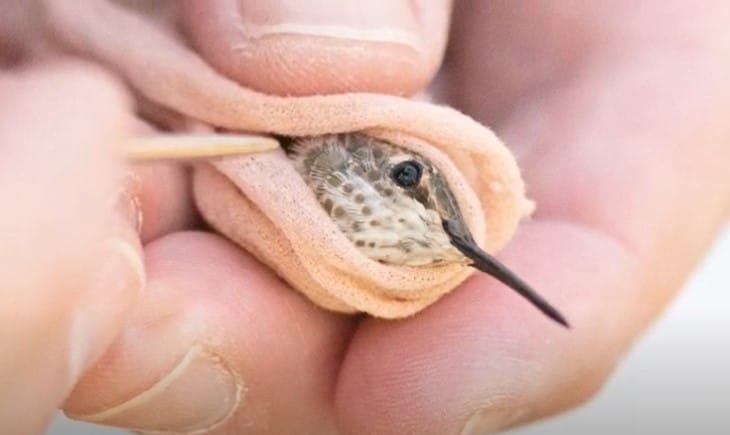
Here at Maine Audubon, each fall we encourage you to keep hummingbird feeders up. We write blog posts and newspaper articles and that is because while we all know Ruby-throated Hummingbirds are in Maine from the beginning of May, through the end of September, it is later in the fall that hummingbirds from western portions of North America can show up here in the east.
[transcript of video]
Most of these western hummingbirds are in the genus Selasphorus, and can be hard to tell apart in the field.
To identify them and help us better understand their movements, we’ll get the help from a licensed hummingbird bander who will catch, measure, and put a band with a unique identifier on the bird’s leg. The band is like a Social Security Number for that bird, and will be used to identify it if that bird is ever seen or caught again.
So, when one of these Selasphorus hummingbirds was reported to us from a backyard in Dayton, we reached out to Scott Weidensaul to help figure out what exactly it was.
With the homeowner’s permission, we set up a homemade trap with a remote controlled door that Scott had made. Please remember, Scott is a licensed bander and has special permits to do this. It would be illegal for anyone else, so DO NOT Try this at home.
It did take a few tries but eventually our mystery bird took the bait.
During the banding process, Scott gathers a series of biometric information from the bird, including the weight, and looking at how much fat the bird has stored. Other measurements are taken and hummingbirds can be aged by looking at the extent of corrugations along their bills—definitely a hard feature to see unless the bird is in the hand. A close examination of some feathers can tell us who this bird is. In this case, a notch on the second rectrix (a tail feather) is diagnostic for Rufous Hummingbird. The smooth bill and a few red feathers on the gorget feathers make this an adult female.
With those questions answered, it was time to give this lady a quick drink before her release.
And with a little puff of air for encouragement, she was off. It didn’t take long before she was back at the feeder, fueling up before making her next movement in her long migration.
What we learn from these individuals is a piece in a large and ever-changing puzzle. Keep those hummingbird feeders up, and let us know if you have any late visitors.
